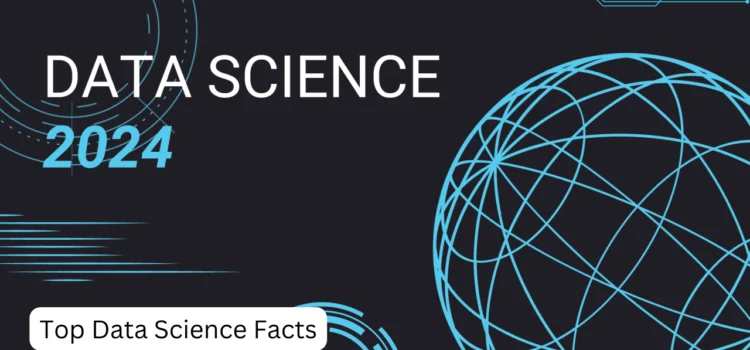In the ever-evolving world of technology and innovation, the realm of data science continues to play an integral role in shaping the way we understand and leverage information. As we step into the promising year of 2024, it’s crucial to stay abreast of the latest trends, breakthroughs, and paradigm shifts within the data science domain. In this blog post, we embark on a journey through the top data science facts set to redefine the narrative this year. From cutting-edge technologies to emerging methodologies, we uncover the key insights that will shape the field of data science and influence the broader spectrum of industries and decision-making processes. So, fasten your seatbelts as we delve into the exciting world of data science and unveil the trends poised to make headlines in 2024.
In today’s business landscape, data science has become an indispensable force, driving informed decision-making and strategic planning. The exponential growth of data generated across industries underscores the need for professionals adept in deciphering complex datasets. A Masters in data science serves as a catalyst for individuals aspiring to excel in this dynamic field, offering advanced knowledge and hands-on skills. This specialized education equips learners with the expertise needed to navigate intricate data landscapes, enabling them to extract actionable insights. In essence, a Master’s in data science is a strategic investment, propelling individuals towards mastery in the discipline and positioning them as invaluable assets in the contemporary business milieu.
Data Science: An Introduction
Data science is a multifaceted field that uses scientific methods, algorithms, processes, and systems to extract meaningful insights, facts and knowledge from structured and unstructured data. It involves a combination of statistics, mathematics, and computer science to analyze complex datasets, uncover patterns, and inform decision-making. Data scientists uses various tools and techniques to process and interpret information, facilitating businesses in making informed choices, predicting trends, and optimizing processes. Starting from machine learning to data visualization, data science encompasses a range of approaches to extract valuable insights from vast amounts of data, making it a critical discipline for innovation, problem-solving, and strategic planning in contemporary industries.
Data Science Benefits
Informed Decision-Making: Data science enables organizations to make informed and strategic decisions by analyzing vast datasets and extracting valuable insights.
Predictive Analytics: Utilizing advanced algorithms, data science allows for the prediction of future trends and outcomes, helping businesses proactively plan and adapt to changing scenarios.
Operational Efficiency: By optimizing processes through data analysis, organizations can enhance efficiency, reduce redundancies, and improve resource allocation, leading to cost savings
Personalization: Data science facilitates the creation of personalized experiences for customers by employing behavior and preferences analysis, enhancing customer satisfaction and loyalty.
Risk Management: Through data analysis, businesses can identify and mitigate potential risks, making risk management more effective and adaptive.
Innovation: Data science drives innovation by uncovering new patterns, opportunities, and market trends, fostering a culture of continuous improvement and adaptation.
Competitive Advantage: Businesses that harness the power of data science gain a competitive edge, as they can respond in lesser time and effectively to market changes and customer needs.
Automation: Data science contributes to automation by developing algorithms and models that streamline monotonous tasks, freeing up human resources for more complex and creative endeavors.
Scientific Insights: In fields like healthcare and research, data science facilitates scientific discovery by analyzing complex datasets, leading to breakthroughs and advancements.
Customer Insights: Understanding customer behavior through data analysis allows businesses to tailor products and services, improving customer satisfaction and fostering long-term relationships.
Popular Programming Languages for Data Science
Python: Widely regarded as the dominant language in data science, Python is chosen for its readability, versatility, and extensive libraries like NumPy, Pandas, and scikit-learn.
R: Particularly favored for statistical analysis and data visualization, R is a powerful language with a rich ecosystem of packages for advanced analytics.
SQL: Essential for database management, SQL is crucial for querying and manipulating structured data in relational databases.
Julia: Gaining popularity for its high-performance computing capabilities, Julia is becoming a preferred choice for data-intensive tasks and numerical computing.
Scala: Known for its compatibility with Apache Spark, Scala is used for big data processing and analytics, providing scalability and efficiency.
Java and C++: These languages are utilized for building robust and scalable data science applications, especially in enterprise settings.
Choice of programming language often depends on project requirements, existing infrastructure, and the specific needs of the data science task at hand.
Data Science Job and Salary
Data science has recently emerged as a leading profession, offering attractive salary prospects. Examining the current landscape of data science jobs and salaries reveals compelling insights:
The average annual base salary for Data Scientists in the US stands at $117,212, based on a robust sample of 18,000 incomes, as reported by Glassdoor, instilling a high level of confidence in the estimate.
Annual upgrades typically result in a $2,000–$2,500 increase in a Data Scientist’s compensation on average.
According to PayScale, individuals entering the data science field can anticipate an average compensation of $85,000 for their first position.
Experienced Data Scientists with 1-4 years may expect a total pay of $96,000, while those with 5-9 years of experience command an average salary of around $110,000, with further increases tied to seniority.
Projections indicate a substantial growth in the field, with an estimated 11.5 million jobs for Data Scientists anticipated to be generated by 2026.
Conclusion
As we navigate the dynamic landscape of data science in 2024, it’s evident that staying informed is key to leveraging its transformative power. The outlined facts showcase the field’s centrality in decision-making, innovation, and industry evolution. For those aspiring to excel, a Masters in data science emerges as a strategic catalyst. The advanced education not only imparts in-depth knowledge but also hones practical skills, positioning individuals as experts in this fast-growing domain. In a world increasingly dependent on data-driven insights, a Master’s in data science is a gateway to unlocking opportunities, fostering innovation, and making a lasting impact on the ever-evolving data science landscape.
For more interesting articles read our homepage.






